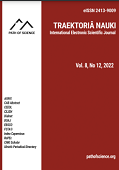Polysemy and Context in Literary Works
Polysemy and Context in Literary Works
Author(s): Ilhama Yusif KhanaliyevaSubject(s): Studies of Literature, Lexis, Semantics, Phraseology
Published by: Altezoro, s. r. o. & Dialog
Keywords: polysemy; lexicology; context; homonymy; word meanings;
Summary/Abstract: Polysemy is an essential linguistic process that occurs intensively in language. It plays a significant role in creating phraseological combinations and generating various semantic changes in the language. Polysemy should be distinguished from eurysemy (lexical broadness) and homonymy. Polysemy and eurythmy in language and speech reveal some common properties; however, they are essentially different linguistic phenomena. In Eurysemy, the word's meaning is realized similarly through the context, but it does not undergo significant changes. One of the structural components of a polysemous word is a lexico-semantic variation or separate meaning, which is essential in the study of polysemy. Elimination of polysemy - actualization of a particular meaning of a word is carried out in context. There are two opposing views regarding the nature of a word's linguistic meaning in linguistics. The word itself has no lexical meaning and acquires it only in context. The lexical meaning initially enters the word and is only expressed and recognized in context. A polysemantic word implemented within a set of fixed indicators has a phraseologically related meaning, and each combination of a given polysemantic word with a specific hand becomes a separate phrase. The article deals with polysemy in language generally and in literary works. It explains its significant role in creating phraseological combinations and generating semantic changes in the language and other linguistic features.
Journal: Traektoriâ Nauki
- Issue Year: 9/2023
- Issue No: 5
- Page Range: 1008-1013
- Page Count: 6
- Language: English

